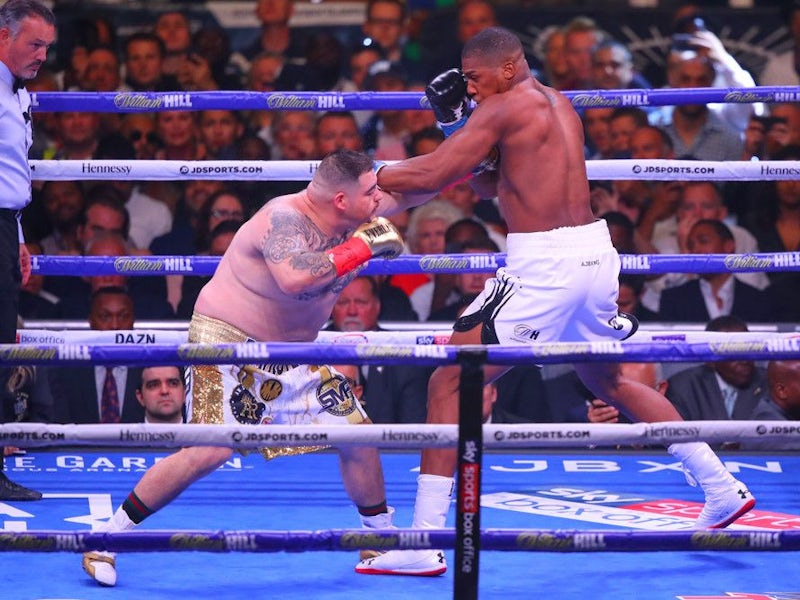ADVERTISEMENT
Understanding advanced boxing stats

Boxing is an easy sport to watch, but an intensive one to truly study. The intricacies of the sweet science go far beyond punches and weight, making advanced statistics critical to better understanding the sport and its combatants.
Lace up your gloves and keep your chin high as we take a look at six advanced boxing statistics you need to know.
Total Punches Thrown
Punching is the name of the game, and the backbone to any fighter’s success comes down to how much, or how little, they throw in the ring. Punch totals tend to go down the heavier the weight class becomes. Yet, establishing a fighter’s pattern based on their activity gives you an insight to their game plan and their conditioning.
Methodical fighters tend to throw at or below the weight class average. This indicates a defensive approach by either counter-punching or inside fighting. Higher output fighters that throw at or above the average for the weight class are the aggressors. They come forward with combinations and tend to throw a lot of punches from the outside.
Power Shots Landed
While the jab is a phenomenal weapon, it is a positioning tool that gets lost in the shuffle. The true scoring punches to the judges and the public are power shots, meaning a hook, uppercut, or cross to the head or body. These eye-catching shots leave more of a lasting impression than a flickering jab, and often tell the story of the fight.
The accuracy of which fighters land their power shots is what is critical here. If a fighter can land roughly 40% or more of their power shots, it’s a sign that they are winning the fight. Case in point is undefeated WBO welterweight champion Terence Crawford who in fights tracked by Compubox lands an astounding 47.5% of his power shots.
Knockout Percentage
A high knockout percentage is the most obvious indicator of punching power, but believe it or not, there is a bit more to knockouts than one might think. If a fighter maintains a knockout average of 60% or higher through their careers, they would garner the reputation of being a power puncher, but this can be a little misleading.
Take for instance junior middleweight champion Jermell Charlo, who has a pedestrian 52% KO average. But Charlo’s average winning round is 6.52, meaning his stoppages come early in fights and he is a capable finisher when he hurts his opponents.
Plus/Minus Differential
The ultimate homework statistic is boxing’s plus/minus differential. This statistic determines a fighter’s defensive efficiency, detailing how many times they land shots compared to shots landed on them. Boxing’s best tacticians rank very high in this statistic, whereas the brawlers and grinders predictably rank lower.
At his peak, Floyd Mayweather was at an unbelievable +30. The higher the differential, the more conclusive of a performance a fighter has. Fighters in the minus are more likely to be outworked by their opponents and have to rely on a sturdy chin and punching power to survive the fight.
Strength of opposition
So much of boxing is simply passing the eye test, but determining the strength of opposition of each fighter ahead of a bout is also important. By taking a small sample size of recent fights, usually five to seven bouts, we can calculate that fighter’s strength of opposition by calculating their win percentages.
Ahead of Saul Alvarez’s bout with Billy Joe Saunders, Alvarez’s last five opponents had a combined record of 144-8 with a winning percentage of 94.7%. Saunders’ foes were 164-24-1 with a winning percentage of 86.7%. So it would come as no surprise that Alvarez was so dominant ahead of his eighth round stoppage of Saunders. He had beaten tougher opponents while Saunders took the easy road.
Level of activity
We are long past the days when fighters would fight five or six times a year. With that said, how often a fighter plies their trade is an under looked factor when analyzing a fight. Older fighters can get away with taking extended breaks between fights, but ring rust can be detrimental to a developing talent. Inactivity can be caused by a lack of desire, medical reasons, or contractual disputes, but it almost always bodes poorly for that fighter.
Keith Thurman was out of the ring for nearly two years recovering from several surgeries and reportedly did not have the same desire to return, but he couldn’t pass up the payday with Manny Pacquiao in 2019. Thurman was dropped early in the fight and came on strong when the fight was out of reach, resulting in a narrow defeat.
ADVERTISEMENT


